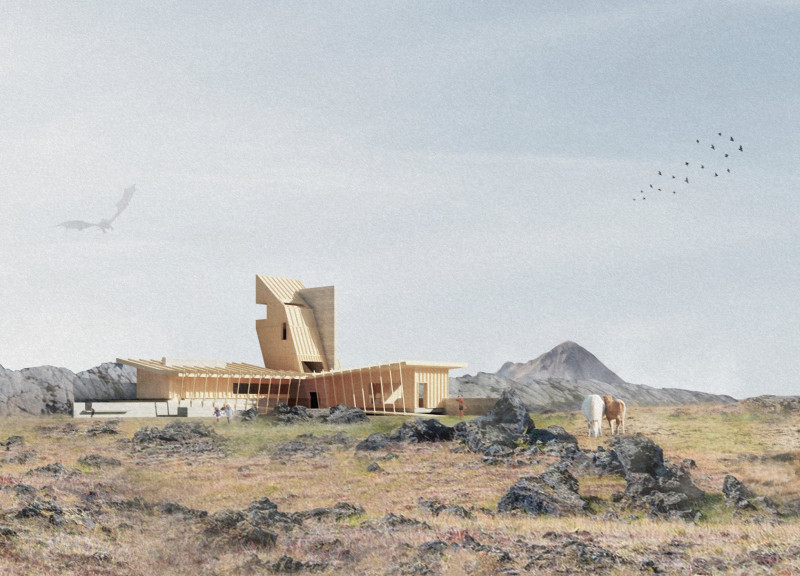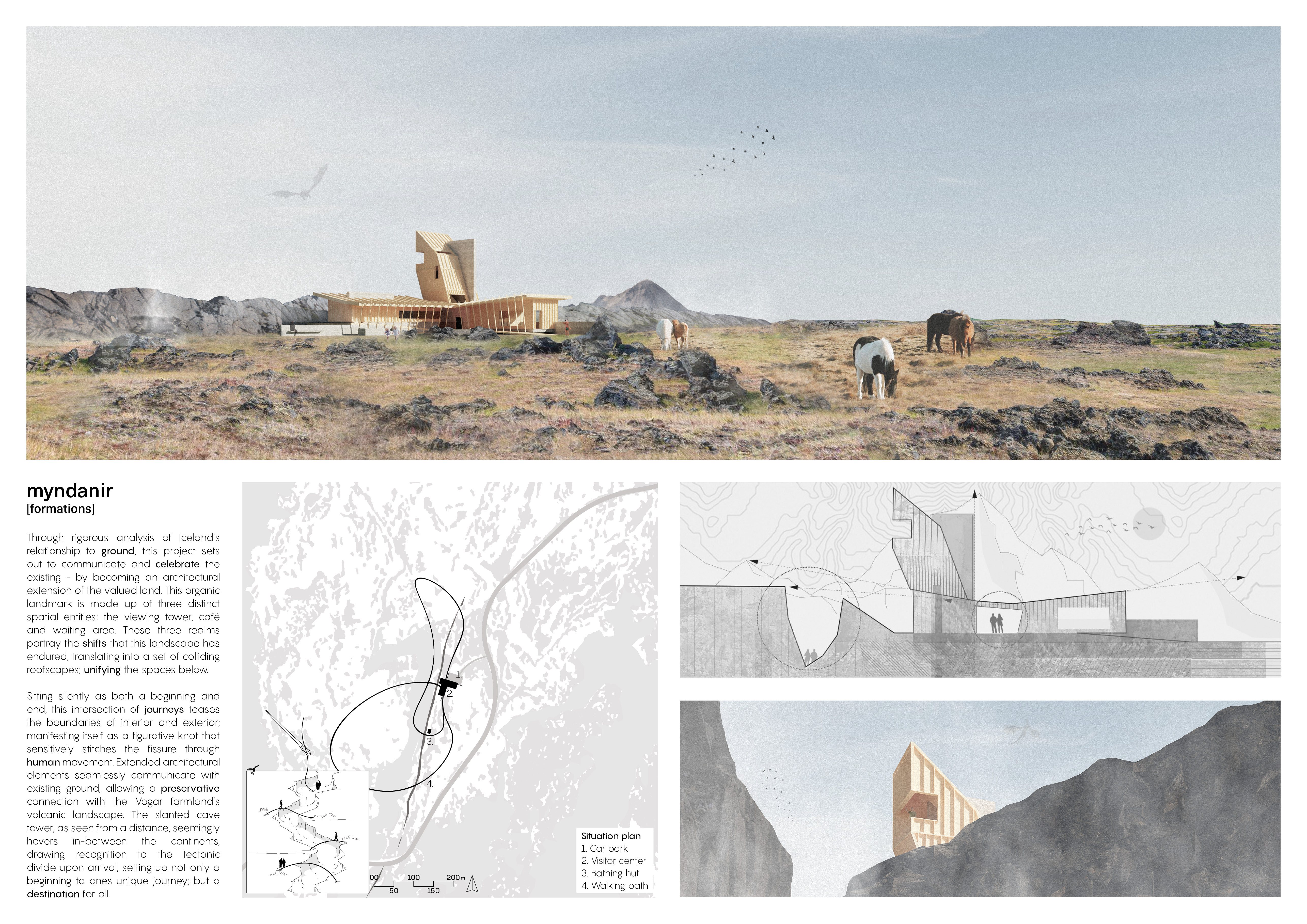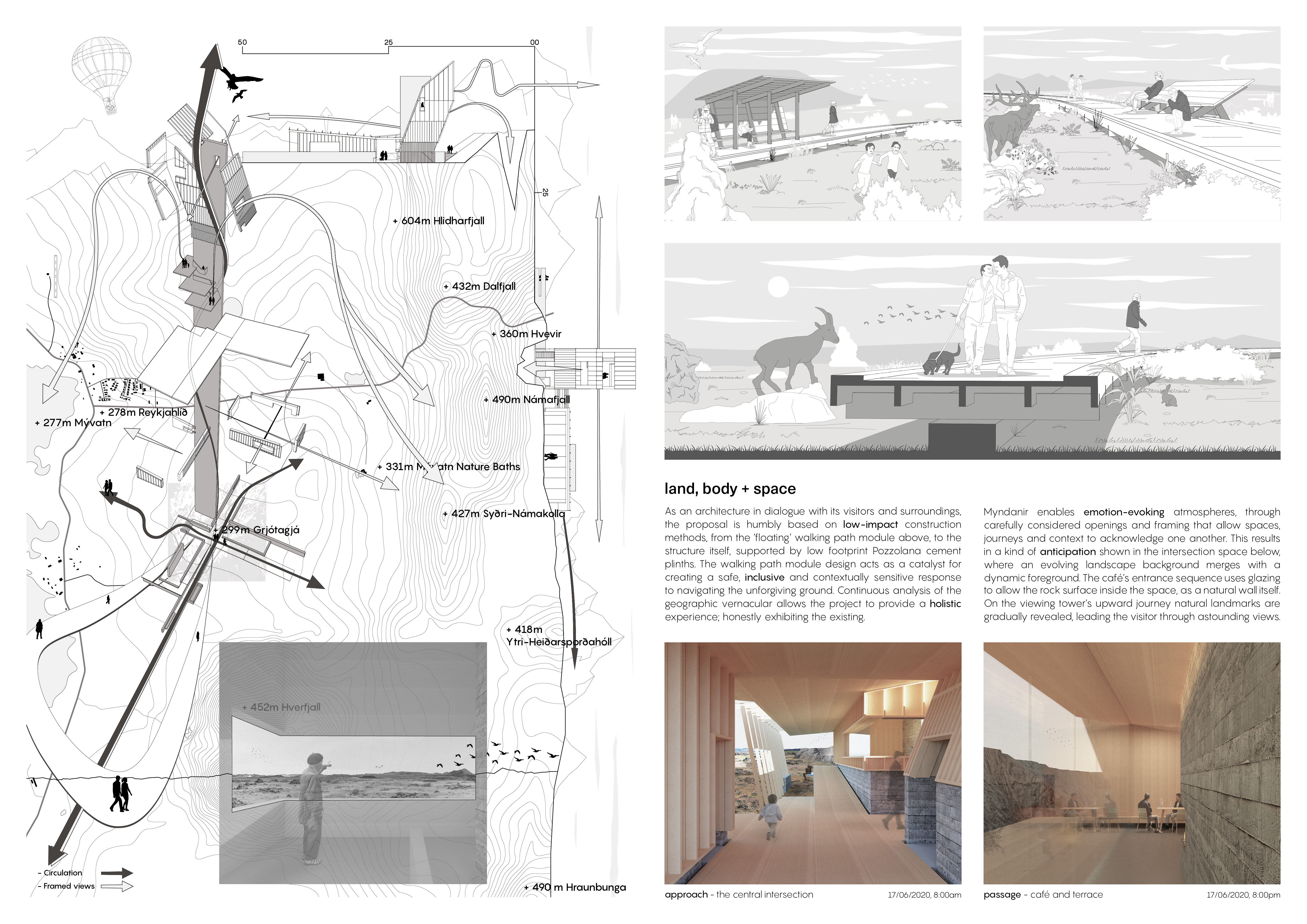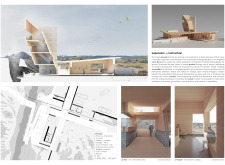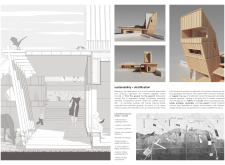5 key facts about this project
The design is located in Iceland and interacts thoughtfully with the striking volcanic landscape. It includes three main areas: a viewing tower, a café, and a waiting area. The overall design concept emphasizes the connection between the built environment and nature. The structure serves not only functional purposes but also aims to enhance the experience visitors have with the dramatic scenery around them.
Design Intent
The architecture highlights a relationship between forms and the surrounding land, presenting various roof shapes that intersect and unite the space beneath. The viewing tower stands out, acting as a landmark that draws attention to the region's geological features. It helps visitors understand the landscape's history and significance. The design is not just about aesthetics; it also serves an educational purpose that connects visitors to the site.
Spatial Organization
Different areas of the design are carefully arranged to encourage movement and interaction. Visitors navigate through the tower, café, and waiting area, with each space providing a unique perspective on the surroundings. Pathways guide the flow of traffic, inviting exploration and ensuring that the journey and destination are equally important. This thoughtful layout creates an engaging way for visitors to experience the shifting landscape.
Material Considerations
Materials used in the design play an important role in connecting the structure to its geographical context. Pozzolana cement, made from volcanic ash, is a significant choice, reflecting the local environment. This selection promotes sustainability and aligns with the surrounding land characteristics. Low-impact construction methods are also evident, allowing for minimal disruption to the area. The choice of materials supports durability while fostering a deeper connection to the site.
Design Detail
An interesting aspect of the café is its entrance, designed to showcase the natural rock surface as part of the overall design. Large windows allow light to enter and illuminate the texture of the rock, extending the outdoor views into the interior space. This connection emphasizes the relationship between inside and outside, making visitors feel immersed in the natural setting as they move through different areas.


